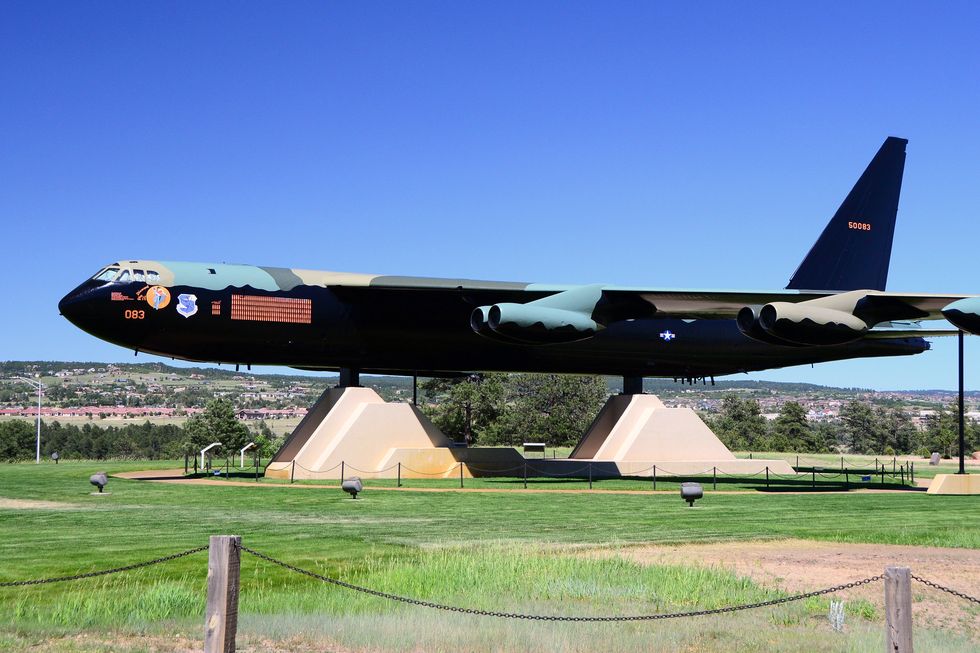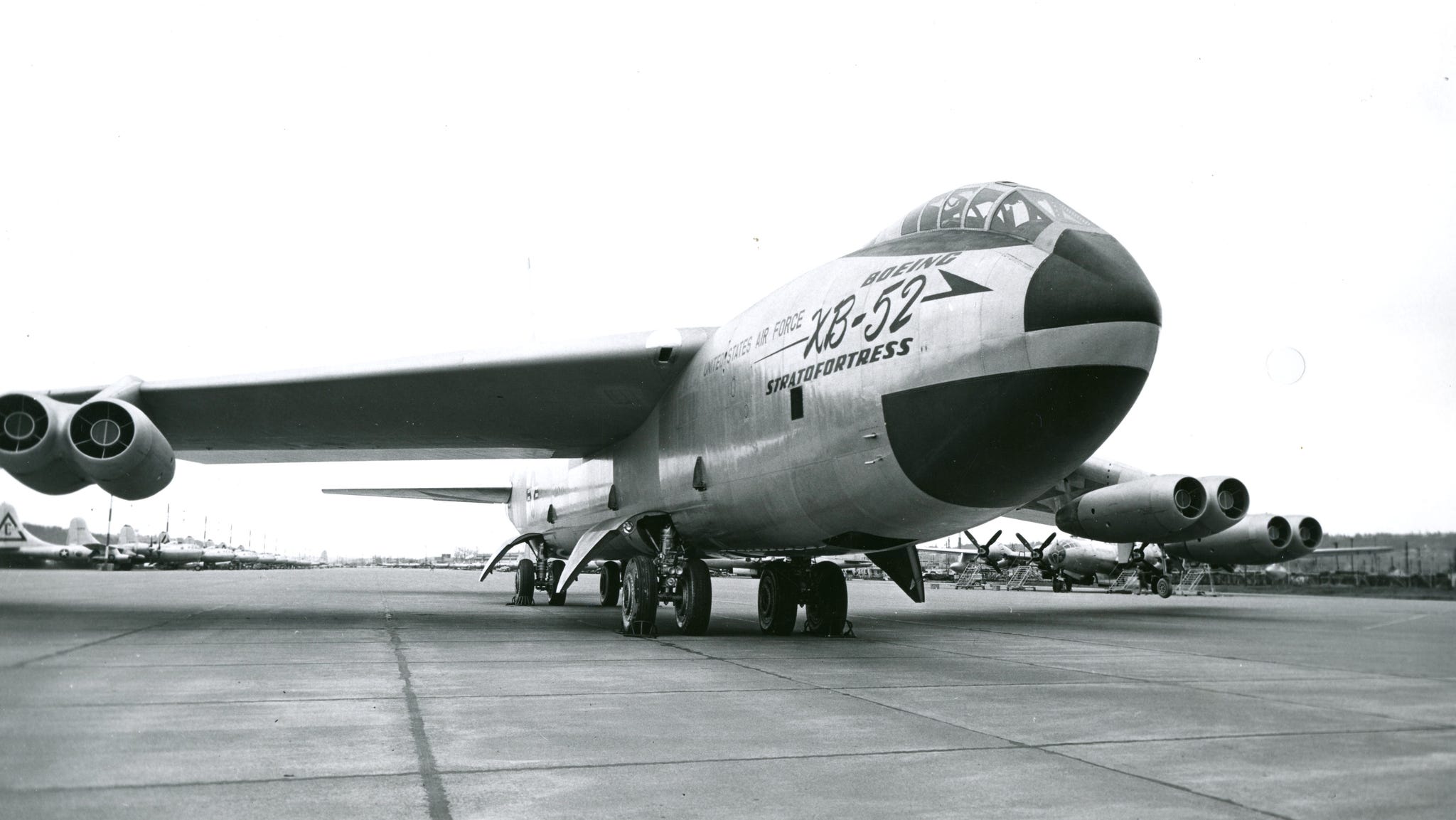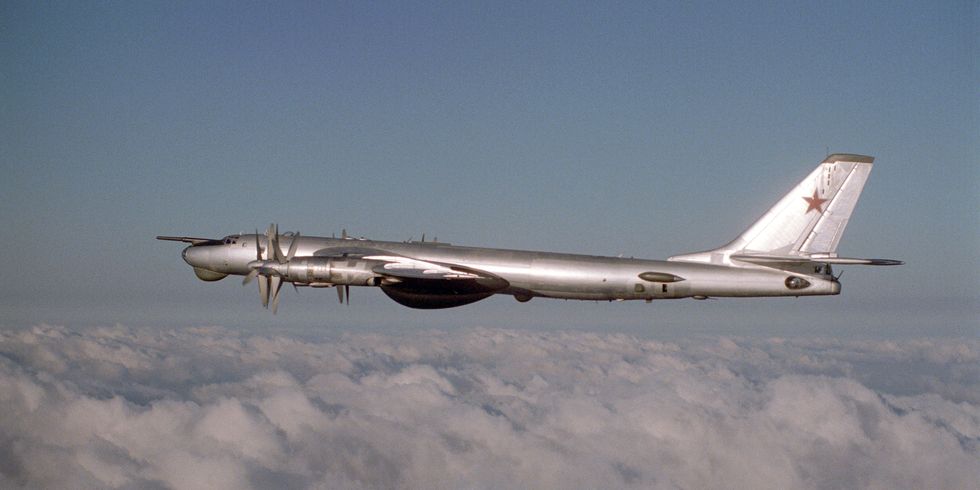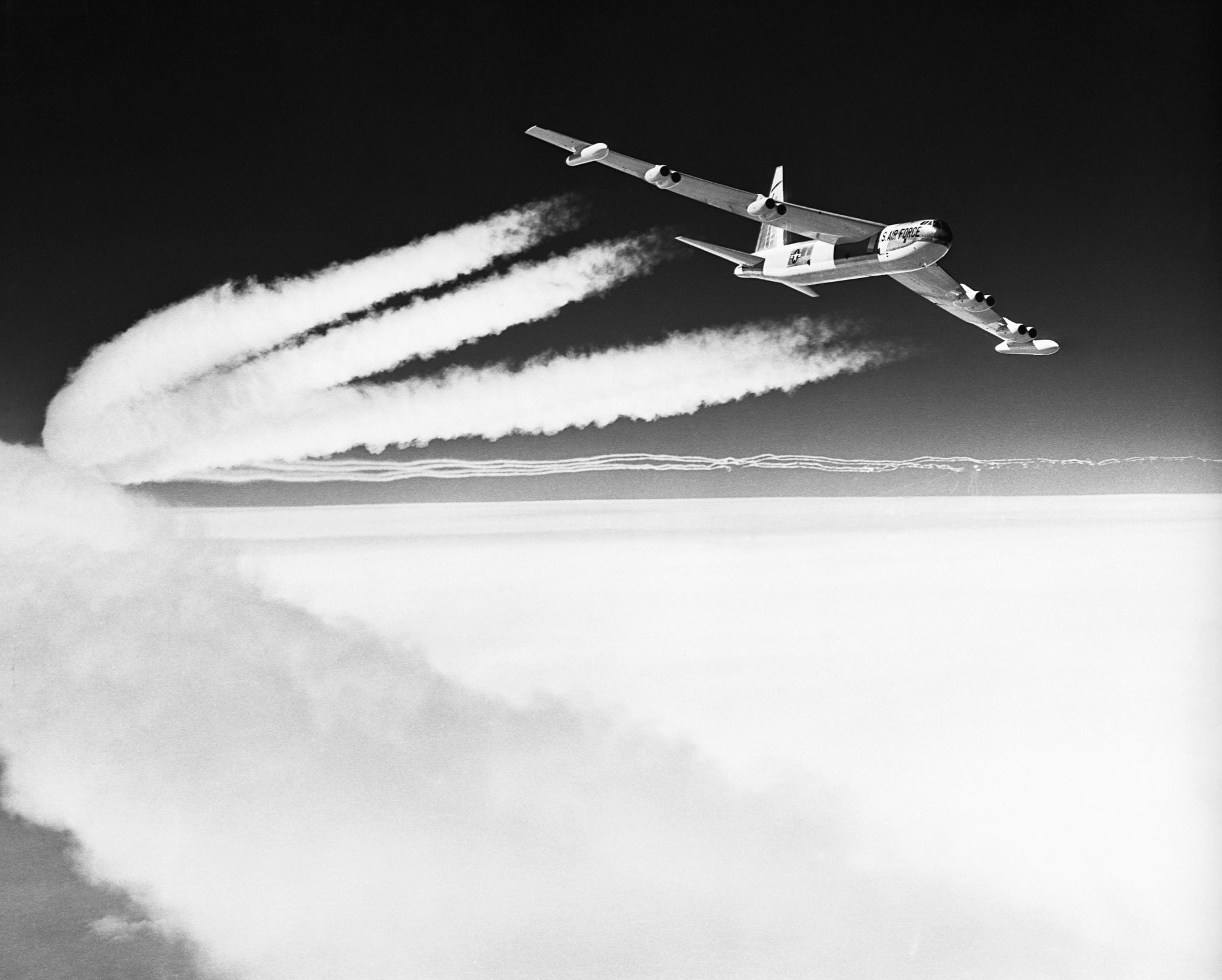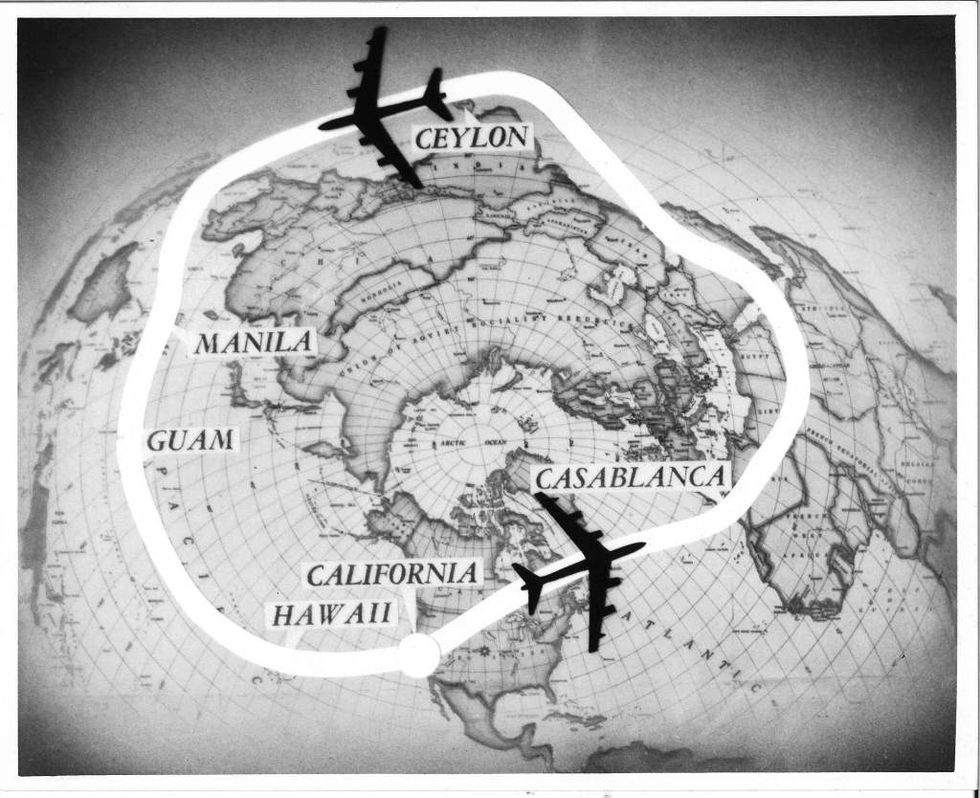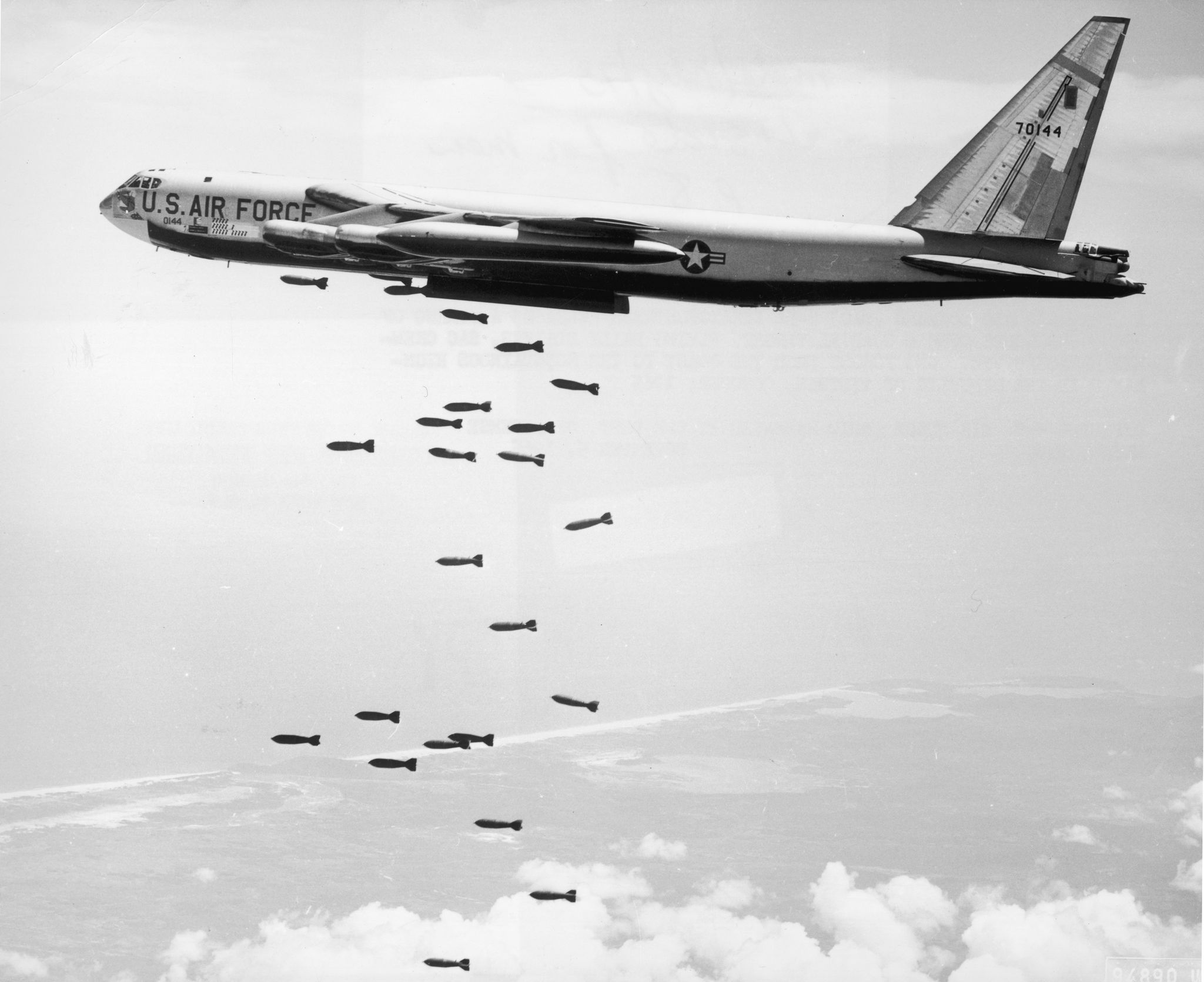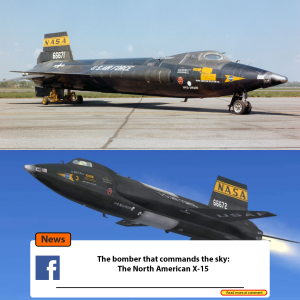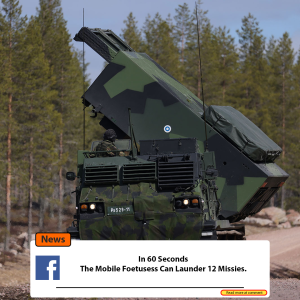On Christmas Eve 1972, while families throughout the world prepared for a day of celebration, the crew of the B-52D Bomber “Diamond Lil” were preparing for something entirely different.
They had been tasked with the dangerous mission of bombing North Vietnamese railroad yards at Thai Nguyen. Their mission was part of a broader campaign known as Operation Linebacker II. At the time, the nearly 20-year-old Boeing B-52 Stratofortress was accustomed to flying bombing missions without a fighter escort, instead relying on tail gunners operating quad .50-caliber machine guns to protect the massive planes from Vietnamese fighters.
As the mission started, Airman 1st Class Albert Moore took his position in the bomber’s tail and scanned the skies for enemy aircraft, then he spotted an inbound MiG-21 as it raced to intercept their bomber.
“I observed a target in my radar scope 8:30 o’clock, low at 8 miles,” he wrote six days later. “I immediately notified the crew, and the bogie started closing rapidly. It stabilized at 4,000 yards at 6:30 o’clock. I called the pilot for evasive action and the EWO (electronic warfare officer) for chaff and flares.”
The Vietnamese MiG-21 was about as old as the Diamond Lil, but it was more than twice as fast, extremely maneuverable, and armed with a single 23mm autocannon and as much as 2,000 pounds of ordnance underwing. More than 30 B-52 Stratofortresses were lost in combat throughout the Vietnam War, and as the Vietnamese MiG continued to close with the Diamond Lil, chances were high that it would be added to the list.
“When the target got to 2,000 yards, I notified the crew that I was firing,” Moore recounted. “I expended 800 rounds in three bursts.” Moore’s kill was confirmed by Tech. Sgt. Clarence Chute, a gunner aboard another B-52 aircraft.
“I went visual and saw the ‘bandit’ on fire and falling away,” Chute wrote. “Several pieces of the aircraft exploded, and the fireball disappeared in the under-cast at my 6:30 position.”
Moore would go down in history as not only the second B-52 tail gunner to earn a MiG kill but also as the last tail gunner in American history to take down an enemy fighter. But this story is only one moment in the operational history of the mighty B-52, an aircraft that’s lifespan will likely stretch a full century—and beyond.
Born in a “Dayton Weekend”
Like many of America’s most legendary military aircraft, the B-52’s development was spurred directly by the need to offset the looming Soviet threat that characterized the Cold War. America needed a bomber that could reach far-flung Soviet targets, defeat their air defenses, and carry a massive atomic payload to shore up the new military doctrine known as “mutually assured destruction.”
So it makes sense that the first design iteration of what would become the B-52 bore a striking resemblance to the Soviet’s long-range bomber, the Tupolev Tu-95 Bear. Boeing’s initial designs for the bomber included swept wings and four massive turboprop engines, which was a logical choice at the time. While jet engines had already existed for over a decade when Boeing made their first pitch in 1948, they were still seen as too fuel-hungry to be feasible for a long-range, high-altitude bomber.
However, Boeing’s pitch was received by the then-32-year-old Colonel Pete Warden, and he was an enthusiastic fan of turbojet technology. The MIT-educated engineer and Army officer was already aware of Pratt & Whitney’s work on the J57 turbojet engine, which would prove to be far more efficient than other jets of the day.
“Get rid of those props or your proposal will be rejected,” Warden reportedly told the Boeing team as a result. He didn’t technically have the authority to send Boeing back to the drawing board, but they conceded nonetheless. It was a Friday, and the Boeing team told Warden they’d have a new design ready for him by Monday.
In order to pull it off, six of Boeing’s aeronautical designers, George Schairer, Vaughn Blumenthal, Maynard Pennell, Ed Wells, Art Carlson, and Bob Whittington, locked themselves in a hotel suite in nearby Dayton, Ohio, and set to work. Wells led the effort to produce what would become a 33-page B-52 proposal, while Schairer sat by himself working with materials he’d purchased from a local hobby store.
“We didn’t know what George was up to,” one of the engineers was later quoted as saying. “While we were running the numbers all weekend, George was off in a corner whittling away on his damn model.”
When it was over, the team returned to Warden with a design for an all-new eight-engine jet bomber that retained the name “B-52.” Their proposal included hand sketches of the new aircraft, and thanks to Schairer, a scale model of the new B-52 made out of balsa wood and painted silver.
“Essentially, they discovered the perfect form of the subsonic jet,” Michael Lombardi, Boeing’s corporate historian, said. “Airbus, Boeing, any other company, it’s the basic form they follow.”
Warden was obviously pleased with the new design, and the B-52 moved toward production.
Around the World Without Refueling
The first B-52 Stratofortress took to the sky just four years later, on April 15, 1952, three years after the Soviet Union developed its first atomic weapon. It would take three more years before the nearly 160-foot-long B-52 would enter service, and once it did, the U.S. was eager to demonstrate its newfound bombing capabilities.
The B-52 was built for long-range bombing missions, but it was the addition of recently purchased looped-hose in-flight refueling technology that made the heavy bomber a truly global threat. In January of 1957, the U.S. Air Force set about pushing the limits of their new mid-air refueling capabilities with a B-52 mission they dubbed “Operation Power Flite.”
At the time, the U.S. Air Force characterized the mission as “by far the most colorful and perhaps the most important of all peacetime operations ever undertaken by the United States Air Force,” but Lieutenant Colonel James H. Morris, the man who commanded the three-bomber mission, had already set records at the stick of a B-52, including leading an eight-bomber mission around the perimeter of North America without stopping to refuel.
Operation Power Flite wanted to prove three things: America’s ability to mount global bomber operations, the B-52’s ability to deploy nuclear weapons at long ranges (think Soviet Union), and the plane’s ability to safely complete missions, assuaging concerns about the B-52’s continued operation.
Of the five B-52s that took off on January 16, 1957, for Operation Power Flite, two would be forced to divert due to mechanical issues. The remaining three, however, conducted a simulated bombing run over Malaya, a British territory on the island of Singapore, before heading across the Pacific toward California.
On January 18, 1957, all three of the remaining B-52s landed at March Air Force Base. Their globe-circling mission had taken less than half the time of the Boeing B-29 Superfortress that had made the first non-stop flight around the world eight years prior. The B-52 had secured its place in the history books and in the Air Force’s budget.
Changing With the Times
Unlike a number of more modern bombers, the B-52’s massive airframe allowed for weapons and electronics that hadn’t even been invented yet. Even so, there’s no way the “Dayton Weekend” team could have ever imagined that their balsa-wood bomber would remain an essential part of America’s nuclear triad decades into the 21st century.
Much of the B-52s lifespan could be credited to Colonel Warden’s insistence on jet propulsion, which helped propel the mighty BUFF, or Big Ugly Fat Fella, through decades of shifting combat strategies and mission parameters. For a time, the B-52’s role was seen as a low-altitude penetration bomber, coming in for bombing runs at just 400 feet above the ground to avoid rapidly developing air defense systems.
Eventually the B-52’s subsonic top speed made it too slow for highly contested airspace, but the advent of nuclear-tipped cruise missiles meant America’s longstanding nuclear bomber could retain its spot in the airborne portion of America’s nuclear triad.
Throughout the 1960s, B-52s carrying nuclear weapons under the banner of America’s Strategic Air Command were airborne 24 hours a day, circling just outside of Soviet airspace to provide an immediate nuclear response to a Soviet attack. Although these bombers were never called upon to deploy their nukes, an accident during refueling in 1966 caused a B-52 go down with four Mk 28 nuclear weapons on board. Three of the damaged bombs were recovered near the Spanish village of Palomares, but it took 11 weeks for a massive Navy search effort to find the fourth on the seafloor.
Today, the B-52 is the only jet in active service to run eight powerful Pratt & Whitney turbofan jet engines, which allow the mighty BUFF to carry 70,000 pounds of ordnance an astonishing 8,800 miles without refueling. It’s also found use outside the nuclear realm thanks to its payload and loitering capabilities. B-52s are used not only in nuclear missions, but for precision bombing and close air support missions thanks to its deep weapons magazine and upgraded flight systems.
B-52s have participated in combat operations throughout the Global War on Terror, including bombing runs over Afghanistan during Operation Enduring Freedom, and air support missions during Operation Iraqi Freedom. A B-52A, named The High and Mighty One, and a B-52B, named Balls 8, served NASA as a test platform for its X-15 experimental hypersonic aircraft.
In recent years, upgrades to the B-52’s internal weapons bays now allow it to carry advanced Joint Direct Attack Munitions and Joint Air-to-Surface Standoff Missiles internally as well as on external pylons, alongside a bevy of other munition options. All told, recent upgrades have produced a 66 percent increase in the B-52s payload capabilities, helping to ensure the aircraft remains a workhorse for decades to come.
A Century of Service
In 2015, the Pentagon awarded Northrop Grumman a contract to develop America’s next long-range, heavy payload bomber. The B-21 Raider, as it would later be dubbed, is expected to enter service sometime in the mid-2020s and borrows elements of its stealth design from its predecessor, the B-2 Spirit.
America’s only supersonic heavy payload bomber, the B-1B Lancer, is also expected to be put out to pasture in favor of the forthcoming B-21—but the longstanding nuclear workhorse Boeing B-52 Stratofortress is notably absent from the Air Force’s pending retirement list. In fact, two B-52s have actually been pulled back into service years after they were retired—once in 2015, and again last May.
It now appears that the venerable B-52 will remain flying years after the last B-2 Spirit or B-1B Lancer have flown off into the sunset. Thanks to continued upgrades, the Air Force now expects their fleet of 76 B-52Hs to remain in service until at least 2050, with a few expected to last into the early portions of the 2060s.
In order to sustain combat operations as it approaches the century mark, the B-52 will need a slew of new technologies and upgrades, and the Air Force has already set about installing new cockpit displays, active electronically scanned array (AESA) radar that allows it spot targets on the ground, and secure data links that make the mighty BUFF a bomber and a valuable aerial reconnaissance asset.
In the coming years, the Boeing B-52 Stratofortress is expected to carry some of America’s most advanced weapons systems, including some of the first operational hypersonic missiles. Hypersonic weapons are capable of traveling at sustained speeds in excess of Mach 5, making them all but indefensible with the most modern of air defense systems.
The B-52 “Stratosaurus,” as some have taken to calling it, may lack modern stealth capabilities, but its reliability, payload capabilities, and flexibility have ensured its continued service. Stealthy platforms like the B-21 and the F-35 Joint Strike Fighter may clear the path, but once air defenses are down, the mighty B-52 will bring the heat.
Alex Hollings
Alex Hollings is the editor of the Sandboxx blog and a former U.S. Marine that writes about defense policy and technology. He lives with his wife and daughter in Georgia.

